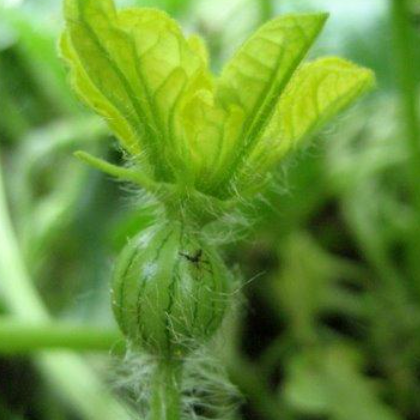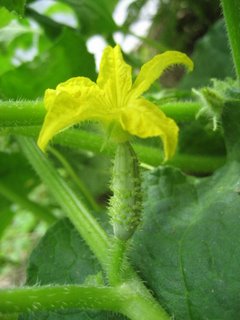
Don't Blush, Be the Bee: Saving Seeds from Squash
 Squash Blossom
Squash BlossomSaving Seeds from Cucurbits
There used to be a certain moment during hands-on seed saving workshops when I would blush. My cheeks would flush when discussing the intimacies of hand pollinating squash blossoms while taking a male flower and rubbing it around inside the female flower. These days, even with the giggles and gasps or silent wide eyes of virgin seed savers, I don't even blink. I think of the act as being the bee, and more importantly, being the first bee to do the deed.
Successfully saving seeds from melons, cucumbers, or squash is extremely rewarding--the varieties are endless and intriguing. That said, it can be a bit tricky to accomplish. Follow the tips below to start out right.
 Early Yellow Crookneck Summer Squash. Over-ripe and ready to seed saving.
Early Yellow Crookneck Summer Squash. Over-ripe and ready to seed saving.PLAN
Cucurbits come in several distinct species.
Watermelon are Citrullus lanatus; all other melons are Cucumis melo; cucumbers are Cucumis sativus; and squash are one of several Cucrbita species, either maxima, mixta, moschata, and pepo. If working with squash, be sure to know the species of your plant from the start. Recommended isolation distance for seed-saving is ½ mile. Since this is not possible for most home gardeners who enjoy growing multiple varieties, hand-pollination is the way to go.
 Left to right: Open flower= too late. Mature unopened flower= perfect. Immature closed flower=too early.
Left to right: Open flower= too late. Mature unopened flower= perfect. Immature closed flower=too early.HAND POLLINATE
By July, male and female flowers will dot your cucurbit plants. Identify male and female flowers of crown fruit which are likely to open the next morning. Tape them shut and flag them. In the morning, cut the male flowers, leaving some stem. Un-tape and remove petals. Next, un-tape the female flower and brush on pollen from multiple male flowers. Re-tape female flower and flag. Take heart when you see the results of this labor wither on the vine: only 20% of hand-pollinated fruit will mature. Usually this is no problem, however, as cucurbits bear a tremendous number of seed per fruit.
 Over-ripe squash can be a whole lot of fun.
Over-ripe squash can be a whole lot of fun.HARVEST
Seeds of winter squash, melon, and watermelon fruit are ready to harvest when the fruit is ripe. Simply harvest, scoop out seeds (or spit out, for watermelon), and wash and dry the seeds before storing in an airtight container. For cucumbers and summer squash, the fruit should be over-ripe by about twenty days before harvesting for seed.
 Close up of female cucumber flower. Note the tiny fruit forming at the base of the blossom.
Close up of female cucumber flower. Note the tiny fruit forming at the base of the blossom.A NOTE ON SQUASH CROSS-POLLINATION
If you grow only one type of squash from each species (examples below), and there are no other gardens within ½ mile of your yard, you don’t need to worry about hand pollinating. Let the bees do the work, and relax!
Maxima: Big Max, Buttercup, Galeaux d’Eysines, Hubbard, Marrow.
Mixta: Cushaw, some gourds.
Moschata: Butternut, Cheese. Pepo: Acorn, Field Pumpkin, Crookneck, Scallop, Zucchini.






